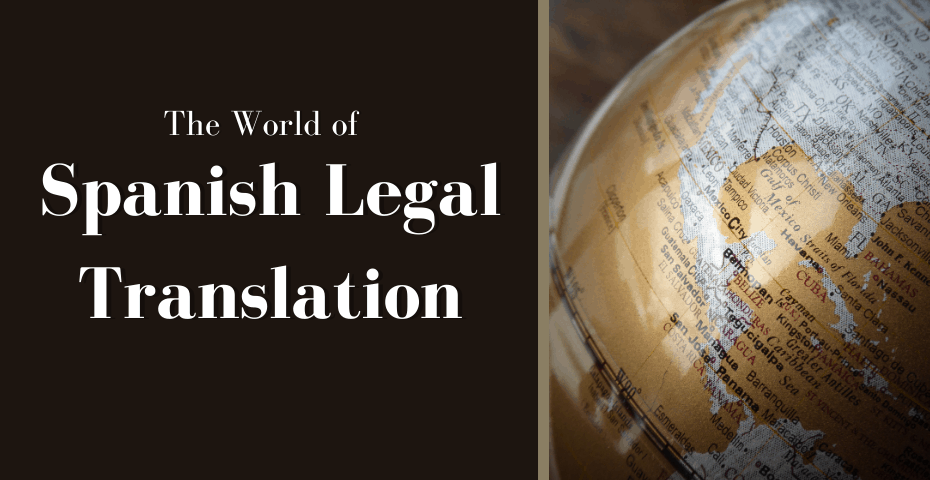Welcome to a comprehensive look at the key challenges facing translators specializing in Spanish legal documents. This detailed guide explores the complexities of Spanish legal translation and provides insights, strategies, and expert tips to effectively overcome these hurdles.
Table of Contents
- Navigating Legal Terminology: The Language Maze
- Maintaining legal accuracy despite cultural differences
- Maintaining Contextual Integrity: A Balancing Act
- Compliance with legal procedures: setting the right tone
- Overcoming ambiguity: Pitfalls of legal language
- Ensure compliance with legal standards and regulations
- Conclusion
- FAQ
- Are machine translation tools effective for legal translation?
- How can translators ensure confidentiality when working with sensitive legal documents?
- What role does cultural competency play in legal translation?
- How can legal translators stay up to date with the latest legal developments and terminology?
- What are the most common pitfalls to avoid in legal translation?
Navigating Legal Terminology: The Language Maze
Legal documents are notoriously complex, full of jargon and legalese that can confuse even the most experienced linguist. Successfully translating legal terms requires not only language skills but also a deep understanding of the legal systems of both the source and target languages.
Navigating this language maze requires deciphering complex terminology, understanding its legal meaning, and ensuring exact equivalence in the target language. In addition, the nuances of legal terminology vary across Spanish-speaking countries, adding further complexity and requiring attention to detail.
Maintaining legal accuracy despite cultural differences
Beyond linguistic challenges, legal translators must address cultural nuances that greatly impact the interpretation and application of legal documents. What is legally binding in one culture may have a completely different meaning or impact in another.
Therefore, effective translation requires more than just language acquisition. It requires cultural competency and a nuanced understanding of the socio-legal context in both the source and target cultures. If these cultural subtleties are not taken into account, misunderstandings can occur, compromising the integrity and effectiveness of the translated document.
Maintaining Contextual Integrity: A Balancing Act
Translating legal document translation is more than just converting words from one language to another. The contextual integrity of the original text must be maintained. The aim is to capture not only the explicit meaning of a word, but also its implicit meaning, intended interpretation, and legal consequences.
Achieving this delicate balance requires close attention to detail. Because even small deviations from the original context can significantly change the legal meaning of the translated text. Translators must use sound judgment and employ sophisticated language strategies to faithfully express the original intent within the confines of the target language.
Compliance with legal procedures: setting the right tone
Legal documents are characterized by formal, precise, and often strict language that reflects the seriousness and seriousness of their content. When translating such documents, translators must maintain an appropriate level of formality and professionalism, and maintain an appropriate tone, while ensuring clarity and accessibility for the target audience.
Deviating too much from the prescribed procedure risks undermining the legal validity and authority of the translated document, while being too strict can make it difficult for the reader to understand or even prevent it from being read. there is. Effective legal translation requires a delicate balance between compliance with legal procedures and language accessibility.
Overcoming ambiguity: Pitfalls of legal language
Ambiguity is inherent in legal terminology, arising from its precision and specificity, but also from its susceptibility to interpretation and reinterpretation. Translators must delicately manage these inherent ambiguities and disambiguate complex terms and phrases to convey unambiguous meaning in the target language.
Its purpose is not only to decipher ambiguities present in the source text but also to prevent ambiguities that may arise during the translation process. By taking a proactive approach and using language strategies to clarify ambiguities, translators can reduce the risk of misunderstandings and ensure the integrity of translated documents.
Ensure compliance with legal standards and regulations
Legal translation is subject to strict legal frameworks and industry standards, so legal norms and conventions must be carefully observed. Translators must stay up to date with the latest legal developments, regulatory requirements, and industry best practices to ensure compliance and maintain the integrity of their translations.
From non-disclosure agreements to certified translation company, legal documents come with unique legal obligations and implications and require careful attention to detail and adherence to established procedures. Failure to comply with legal standards and regulations can have far-reaching consequences, highlighting the importance of care and accuracy in legal translation.

Conclusion
The field of legal translation into Spanish presents significant challenges that require expertise, precision, and cultural sensitivity from translators. By navigating complex areas such as legal terminology, cultural nuances, and contextual complexity, translators overcame these challenges and maintained the integrity, accuracy, and legal validity of the original document. We can provide translations.
FAQ
Are machine translation tools effective for legal translation?
Machine translation tools have improved significantly in recent years, but they often fail to understand the nuances and complexities of legal terminology. Human translators are essential to legal translation because they bring valuable expertise, judgment, and cultural understanding.
How can translators ensure confidentiality when working with sensitive legal documents?
Translators must adhere to strict confidentiality agreements, use secure communication channels, and adhere to strict data protection Confidentiality can be maintained by implementing measures. Additionally, working with a reputable translation company that prioritizes confidentiality can provide additional security.
What role does cultural competency play in legal translation?
Cultural competency is paramount in legal translation, as it enables translators to deal with the cultural nuances and implications of legal texts. To create accurate and culturally appropriate translations, it is important to understand the sociocultural context of both the source and target languages.
How can legal translators stay up to date with the latest legal developments and terminology?
Legal translators should participate in ongoing professional development, legal seminars, workshops, and conferences. We stay abreast of legal developments through participation and exposure to legal documents in both source and target languages. Collaborating with professional legal translation services and networking with like-minded people also makes it easier to exchange knowledge and improve your skills.
What are the most common pitfalls to avoid in legal translation?
Common pitfalls in legal translation include mistranslation of legal terminology, failure to maintain contextual consistency, insufficient understanding of legal concepts, and cultural This includes overlooking nuances. Thorough research, attention to detail, and peer review can help reduce these risks and ensure translation accuracy.




